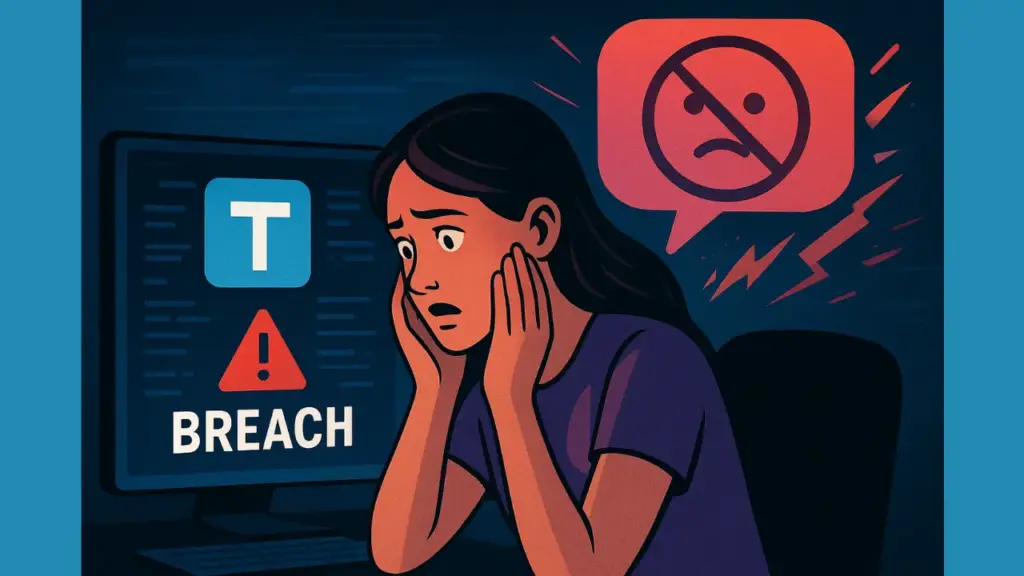1. Introduction
The T app was supposed to be a beacon of safety. Marketed as a protection tool for women, it promised real-time alerts, location tracking, and secure data storage. Users downloaded it with trust, believing it would protect their privacy while keeping them safe.
But that trust shattered when a massive data breach exposed sensitive personal information. The app that claimed to protect women instead put them at risk.
The culprit? A combination of AI-generated code and a dangerous practice known as “vibe coding”—coding without structured planning, rigorous testing, or proper security reviews.
This isn’t just one company’s failure. It’s a warning for every developer, startup founder, and fractional CTO in the tech industry.
2. The Rise and Fall of the T App
The T app launched with an inspiring mission. It targeted a growing concern: women’s safety in public spaces. Features included:
- Location sharing with trusted contacts.
- Emergency alerts triggered by pressing a button.
- A safety timer that alerted loved ones if a user didn’t check in.
Media coverage painted it as a revolutionary tool. Influencers promoted it. Downloads skyrocketed.
But behind the scenes, there were cracks. The team rushed to launch, prioritizing new features over robust testing. Security was treated as an afterthought.
Then came the breach. Hackers exploited vulnerabilities in the app’s code, gaining access to users’ locations, phone numbers, and private messages. The very information meant to protect users was now a weapon in the wrong hands.
3. The Role of AI in the Disaster
AI-generated code is not inherently bad. In fact, many developers use AI tools to speed up development. But AI is not infallible—it generates patterns based on existing code, and those patterns can include vulnerabilities.
In the T app’s case:
- AI wrote significant portions of the backend logic.
- Developers skipped in-depth code reviews, assuming AI output was safe.
- The AI-generated code lacked strong encryption and input validation.
The team fell into the trap of assuming that because AI could code quickly, it was coding securely. This overconfidence led to shortcuts in testing and quality control.
For sensitive applications like safety apps, AI-assisted coding must be treated with extreme caution. Fractional CTOs—experienced technical leaders who guide startups—would have flagged the lack of security audits early in the process.
4. Anatomy of the Breach
The breach was not just a small leak. It was a complete failure of the app’s security framework. Here’s what went wrong:
- Weak Authentication
The login system had no multi-factor authentication. Hackers could easily guess weak passwords. - Unencrypted Data Storage
Sensitive data like location history and contacts were stored in plain text. Once accessed, it was readable without any decryption. - Exposed APIs
The app’s APIs lacked proper access controls. Anyone with minimal technical skills could query user data. - No Incident Response Plan
When the breach occurred, the team didn’t know how to respond. Users were informed days later, giving attackers more time to misuse the data.
The result? Thousands of women’s personal safety details ended up on the dark web.
5. The Dangers of “Vibe Coding”
Vibe coding might sound creative, even fun. It’s when developers code “by feel” without clear plans, documentation, or formal testing. It often happens when teams want to move fast and rely heavily on AI-generated suggestions.
The dangers include:
- No Security Checks – Code is pushed to production without rigorous vulnerability scanning.
- Unstable Architecture – Decisions made on the fly lead to brittle systems.
- Poor Maintainability – No clear documentation means fixing issues later becomes a nightmare.
Startups often fall into this trap because vibe coding speeds up early development. But for high-risk apps like T, where safety and privacy are critical, this approach is a ticking time bomb.
6. Lessons for Developers and Startups
The T app disaster offers hard but necessary lessons:
a) Security First, Always
Don’t treat security as a “later” task. Build it into every stage of development. For safety apps, this includes encryption, secure authentication, and regular penetration testing.
b) Human Oversight Is Essential
AI can assist in coding, but it cannot replace human judgment. Every line of AI-generated code must be reviewed by experienced developers or a fractional CTO.
c) Test Beyond Functionality
Just because an app works doesn’t mean it’s safe. Run tests for vulnerabilities, scalability, and data protection.
d) Create an Incident Response Plan
Breaches can happen even to the best teams. A plan ensures quick, transparent communication and limits damage.

7. The Future of AI-Coded Software
The T app breach is part of a larger trend: as more startups rely on AI tools, the risk of security oversights grows. This incident will likely push the industry toward:
- Stricter AI Coding Guidelines – Industry bodies may establish rules for AI-generated code, especially for safety and health apps.
- Security-Focused Development Training – Developers will need to learn how to audit AI code effectively.
- Regulatory Oversight – Governments may impose compliance checks before certain apps can launch.
For startups, the role of a fractional CTO will become even more critical. These leaders provide technical oversight without the cost of a full-time CTO, ensuring security is never sacrificed for speed.
8. Conclusion
The T app’s downfall is a cautionary tale for the entire software industry. It shows that speed, hype, and AI coding shortcuts cannot replace careful planning, thorough testing, and strong security measures.
For developers, founders, and fractional CTO, the lesson is clear: technology meant to protect people must never be built on shaky foundations.
In the fast-paced startup world, it’s easy to get swept up in vibe coding and AI’s speed. But as the T app disaster proves, neglecting security can turn innovation into a threat.
This wake-up call should push us toward responsible, security-first development. Because in the end, trust is the most valuable feature your app can have.
As StartupHakk often highlights—innovation is powerful, but without responsibility, it’s a ticking time bomb.




